Ford’s distinctive Coke bottle Cortina was a 70s fleet favourite and still makes for an excellent practical classic today. Here’s what you need to know
Sponsored editorial in association with Lancaster Insurance
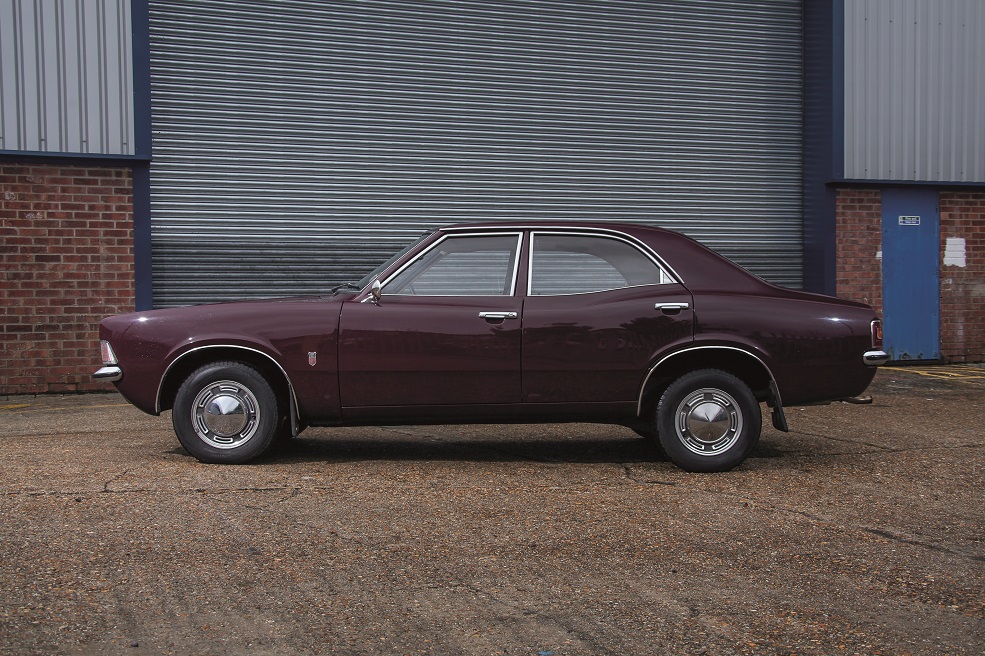
Much like its contemporary, the Capri, Ford was determined to broaden the Cortina’s appeal by offering a bewildering range of models to suit just about every budget. Badge engineering was nothing new to Ford, but with the Mk3 proving especially popular as a fleet and company car, the new line-up truly highlighted how a few extra letters on the bootlid could carry serious showroom value. Buyers could choose from the base model, L, XL, GT, and GXL – the latter two boasting quad headlamps and Rostyle wheels for maximum car park credibility.
Despite its bold, American-inspired looks, the Mk3 Cortina wasn’t quite as advanced under the skin. The MacPherson strut front suspension was dropped in favour of a more conventional double A-arm setup, tuned for comfort rather than cornering prowess. At the rear, the tried-and-tested live axle remained. Entry-level and L models made do with the familiar 1.3-litre OHV Kent engine, but the range also welcomed Ford’s new overhead cam Pinto units in 1.6 and 2.0-litre forms – complete with the novelty of a belt-driven camshaft. Things weren’t entirely straightforward, though: the 1.6-litre Kent engine continued in lesser models, while the UK-spec GT and GXL were fitted with the new OHC version. The 98bhp 2.0-litre was available from the four-door L model upwards.
With multiple body styles, generous trim options and the availability of an automatic gearbox, the Mk3 Cortina had massive market potential. That early momentum was hampered somewhat by poor ride and refinement, along with production issues triggered by a ten-week strike. Ford, however, was quick to act. Suspension settings were revised in 1971 with new spring and damper rates, and by 1972 the Cortina had surged to the top of the UK sales charts – a position it would confidently hold for the next four years.
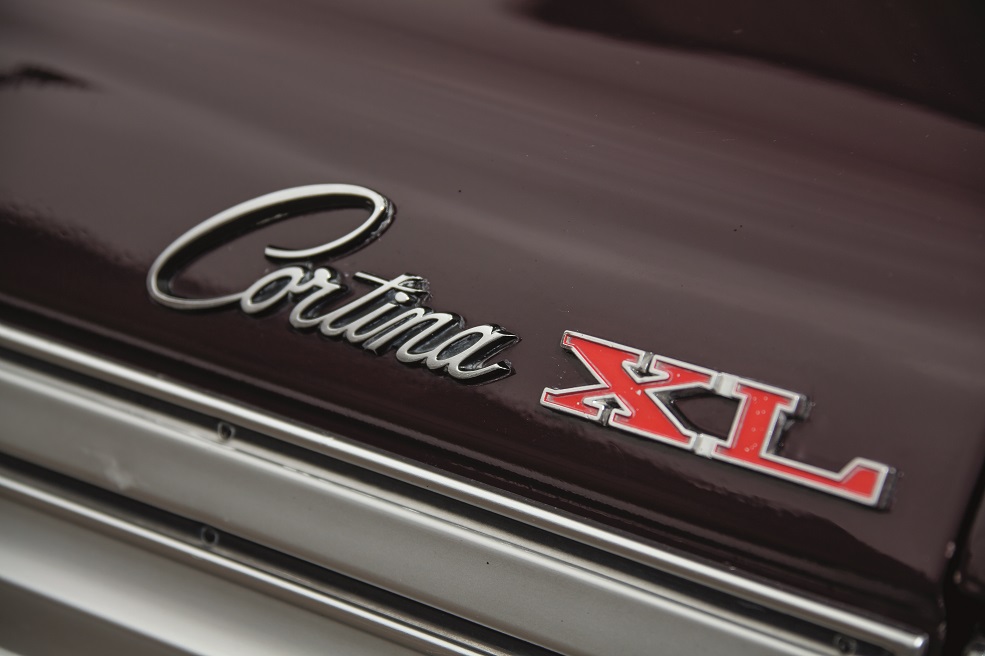
A major facelift in late 1973 brought further refinements to the Mk3 Cortina. The 1.6-litre models now all featured the Pinto engine, while the interior was updated with more modern – though arguably more bland – instrumentation, which would remain a staple of the Cortina range right through to the end of Mk5 production in 1982. Ford also sought to rekindle some of the Mk2 1600E’s appeal with the launch of the 2000E, which replaced the GXL as the top-spec model. Beneath the surface, revised suspension geometry helped sharpen the handling and slightly tame the Cortina’s well-known tendency for a choppy ride on anything other than perfectly smooth roads.
Ultimately, more than 1.1 million Mk3 Cortinas rolled off the production line before the squarer, more conservative Mk4 took over in 1976. By that time, the once-striking Coke-bottle styling had lost some of its flair, and the new model was, in essence, a rebodied Mk3 with a fresh look penned by Uwe Bahnsen – now also shared with its Continental cousin, the Taunus.
Ford Cortina Mk3 values
With the Ford Cortina Mk3 gaining renewed interest among classic enthusiasts, values have been steadily rising. Project cars typically start around £1500 though many suffer from rust and worn interiors making them challenging restorations. For a tidy usable example with some minor imperfections, expect to pay between £4000 and £7000. Well-maintained survivors or fully restored Mk3 Cortinas can command prices from £10,000 upwards. Exceptional concours-level models have been known to fetch over £15,000, so as always, aim to find the best car your budget allows.
Insurance costs
1975 Ford Cortina 1.6L, £7000 value.
Example quote: £109.97 or £127.97 with Agreed Value.Quotation supplied by Lancaster Insurance. Tel: 01480 400761
Quote based on a 45-year-old marketing manager, access to another car, no claims or convictions, club member, 3000 miles per year, no modifications, living in SP2 0HL. Disclaimer: Subject to underwriting criteria. An additional charge may be payable. Authorised and regulated by the Financial Conduct Authority.
Bodywork
Visible rust is commonly found on the front wings, windscreen surrounds, roof gutters, valances, rear arches, rear lower corners and door bottoms. Structural areas particularly prone to corrosion include the inner and outer sills, jacking points, boot floor, rear chassis rails, inner rear crossmember, footwells, front crossmember mountings, inner wings, A-posts and the bulkhead. Fortunately, reproduction repair panels are widely available, aided by much of the underbody metalwork being shared with the Mk4 and Mk5. However, good-quality parts aren’t cheap, and genuine new old stock panels are both expensive and increasingly rare – for example, Ex-Pressed Steel Panels will sell you a complete new boot floor, but charge you £595.50 plus VAT for the privelege. Similarly, a left-hand whole floor pan could be a usefully sizeable panel, but you’ll pay £251.13 plus VAT for it.
The aluminium wheel arch trim found on XL and GXL models is also vulnerable to damage and now difficult to replace. Body trim for the higher-spec variants – including the side mouldings and rear end – can be tricky to source too, while windscreen trim for very early cars is no longer available. Expect to pay around £200 for a decent second-hand four-headlamp grille, assuming you can track one down.

Engine and transmission
All the engines are dependable if properly maintained – but common signs of wear on either of the Kent units include a noisy valvetrain and a rattling timing chain. More serious is piston and bore wear – often revealed by excessive crankcase pressure, blue exhaust smoke, and high oil consumption.
The same symptoms apply to the Pinto engines – though their most notable weakness is camshaft wear. This typically results from oil starvation due to a blocked spray bar – usually caused by infrequent oil changes – and is often accompanied by a noticeable tapping noise. Be alert for signs of overheating too – water pumps on Pintos can seize if an incorrect anti-freeze mixture has been used. The Pinto also features a cam belt, which should be replaced every 30,000 miles.
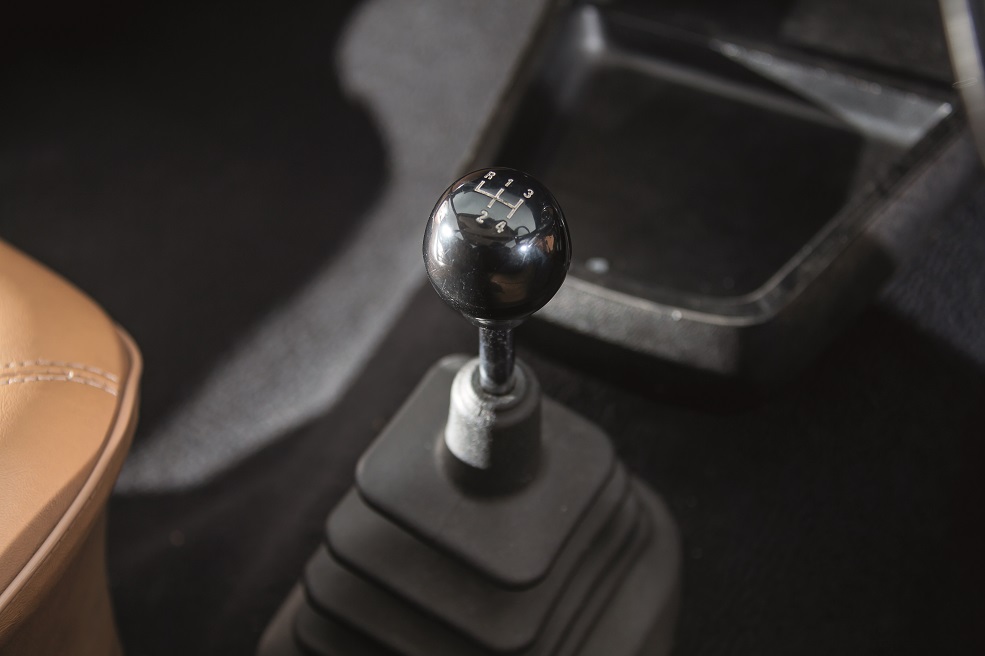
Originally, you had a choice between a four-speed manual gearbox or an optional three-speed Borg-Warner automatic. Manual cars with the smaller engines were fitted with the Type 3 gearbox, while those with larger capacity engines received the more robust Type E. Both manual variants are typically dependable, but they do share a common sign of terminal wear: a growing rumble that rises with road speed, indicating collapsed bearings. Gear selection problems are often down to wear in the plastic ball assembly where the gear lever connects to the gearbox.
The optional Borg-Warner 35 fitted to early, pre-facelift cars, and Ford’s own C3 automatic used in later models, are also generally reliable. However, low fluid levels can lead to delayed drive engagement or the gearbox holding onto gears longer than it should. The fluid itself should appear pinkish; if it’s black and carries a burnt smell, it’s a clear sign of significant internal wear. Rear axle noises are sometimes mistaken for failing wheel bearings, but in truth, the axles and differentials tend to be quite hardy. Still, it’s worth checking the differential cover for rust – corrosion here can lead to leaks and, ultimately, a dry-running diff.
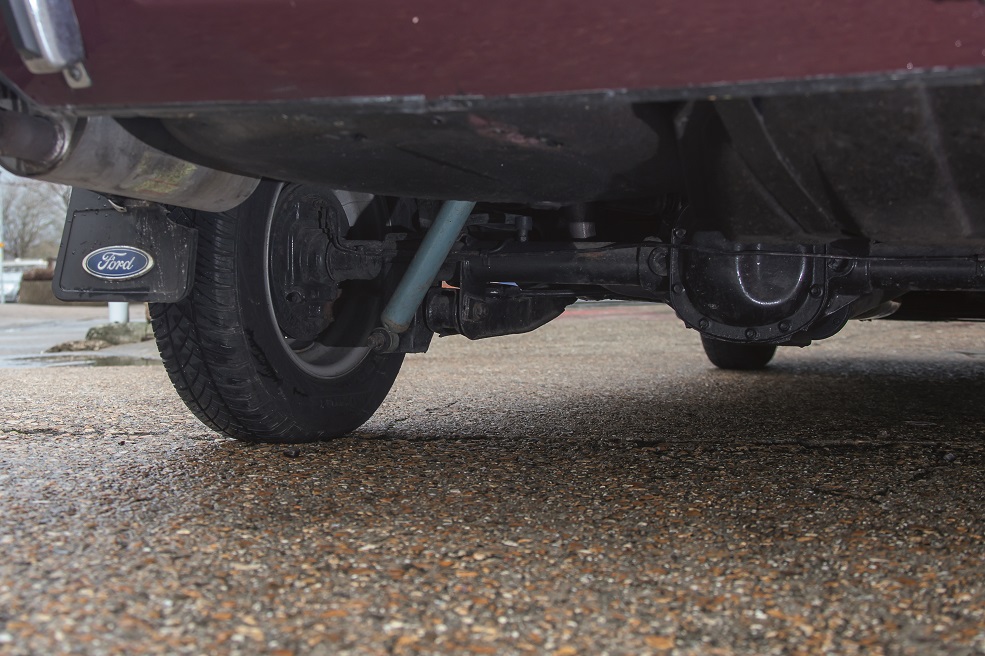
Suspension, steering and brakes
Ah yes, the Cortina and its void bushes. Fitted to the rear trailing arms and diff housing, there are eight in total and they’re notorious for premature wear – the two above the diff usually give out first, followed by those on the axle. Gradually worsening handling is a clear sign, and if you can easily rock the rear of the car from side to side, it means they’re well and truly shot. Poly bushes are the obvious upgrade, but they make the ride so firm that many owners simply stick with regularly replacing the original rubber bushes.
The front wishbone setup is generally reliable, though the pins supporting the top wishbones can wear out, indicated by a clunking noise over uneven surfaces. It’s not an easy repair – the only real solutions are replacing the subframe or fabricating larger pins and enlarging the subframe holes to fit.
The front disc and rear drum brake arrangement works well when maintained, but age and infrequent use can lead to corroded discs, sticky callipers, and seized rear wheel cylinders. A brake overhaul isn’t too daunting – replacement parts are plentiful and affordable, except for shoe fitting kits and adjusters on facelift 1.6-litre models. More troublesome is the master cylinder, which is prone to leaks. Rebuild kits exist, but full replacements can be pricey. Some owners have found a cheaper alternative by adapting a master cylinder from a 1980s disc-braked Land Rover.
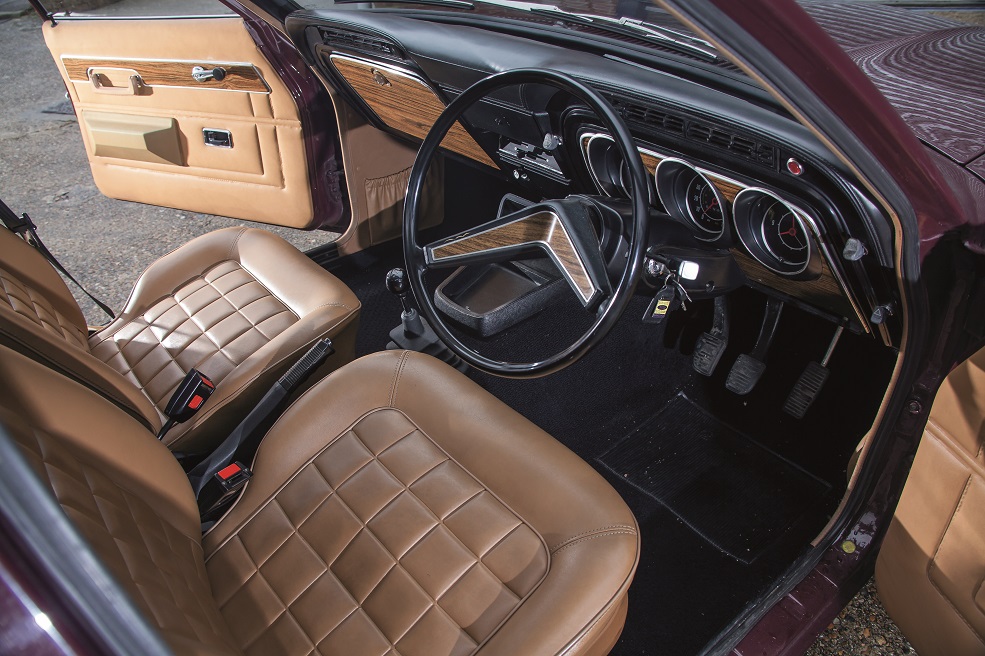
Interior and electrics
The cloth trim fitted to the higher-spec models is less durable than the vinyl found in lower-spec cars, and replacing it is more challenging as well. That said, ruby red and dark green vinyl shades can be difficult to match. Some seat covers have been remanufactured in black, and carpets are also available. Door cards are often warped, cut to accommodate speakers, and tricky to replace – though black ones can be purchased new. A cracked dashboard can only be replaced with a second-hand unit, and the GT’s Tombstone seats are particularly costly when in good condition.
Corrosion in the fuse box causes most of the Cortina’s electrical problems. Fuel gauges frequently fail, with sensors being hard to find, while the clocks in pre-facelift cars are also prone to breaking. Ignition switches are often worn, indicator stalks snap, and early car switches tend to break easily. Rear taillight lenses may become opaque, while the square headlights on facelift models can be difficult to replace, as they are unique to the Mk3. Replacement round headlights – whether 7 inch or 5.75 inch – are relatively easy to source.
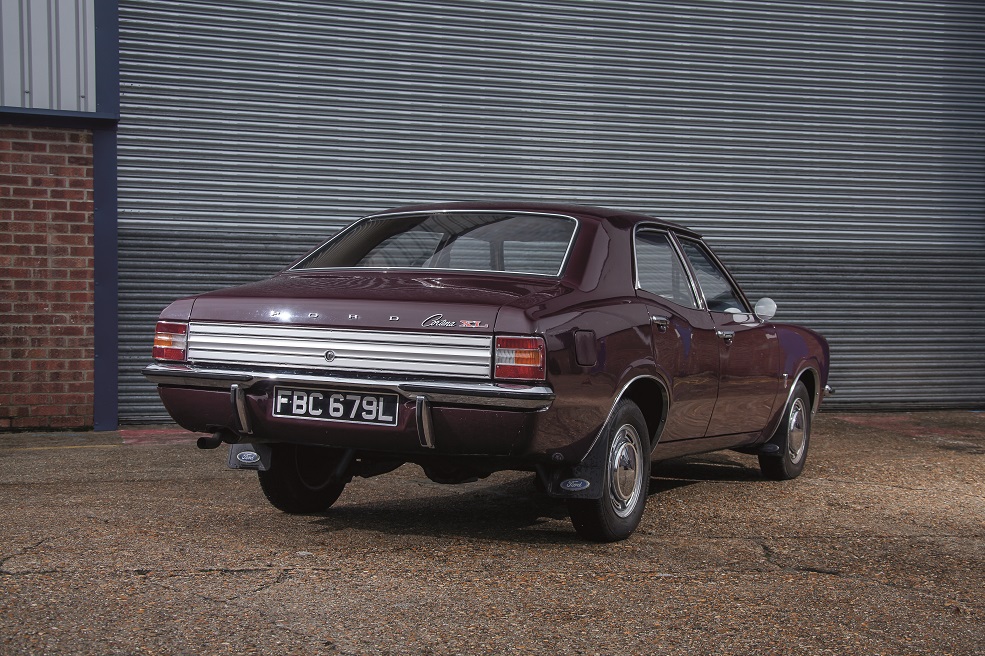
Ford Cortina Mk3: our verdict
As for the Ford Cortina Mk3, its ubiquity, combined with the ravages of time and the propensity for many to go out in a blaze of glory on the oval, means only a tiny fraction survive. But if you want to relive your youth and indulge in a bit of period ’70 style, the Mk3 is perfect.
They’re cheap to run and easy to work on at home, and you’ll have no problems striking up conversations with nostalgic bystanders everywhere.
Ford Cortina Mk3 timeline
1970
Ford Cortina Mk3 (also called TC Cortina) launched in September with Americana-inspired styling and better ride comfort. Available as 2-door and 4-door saloons and 5-door estate.
1971
Ford adds new 1.6- and 2.0-litre engines, plus sportier GT and GXL trim levels.
1973
Facelift introduces revised grille and some interior modernisations.
1974
1600E model introduced with luxury features such as wood-effect dashboard and upgraded seats.
1976
Mk3 production ends as Mk4 Cortina is launched, ending the TC Cortina’s six-year run.




